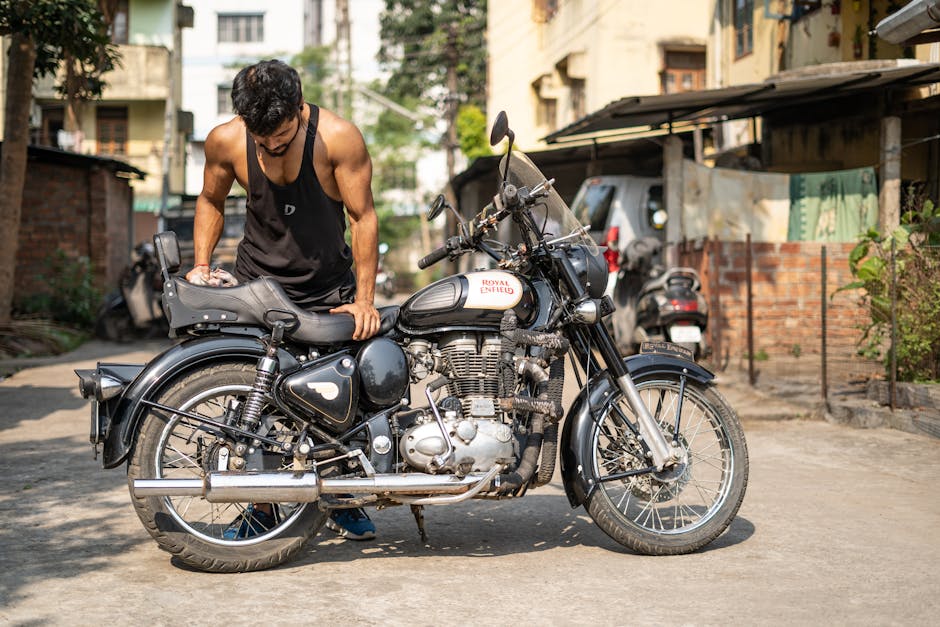You ever just stare at something, right? Like a picture from a few years back, maybe your own awkward teen phase, and you think, “Man, that was so, like, 2010s.” But then you remember the 2010s were obsessed with the 90s, and the 90s, well, they were totally doing their own thing, digging up stuff from the 70s or 80s. It’s a bit of a mind-bender, isn’t it? That, my friends, is what we’re calling “retro retro style” in 2025. It’s not just about wearing clothes your grandma wore; it’s about wearing clothes that were already a throwback when your older sister wore them. Yeah, it’s a trip.
It feels kinda weird to even talk about this. For ages, “retro” meant anything from the 50s to the early 2000s, right? Mostly things from way before your time. Now, though, we’re peeking back at times that themselves were looking back. What’s interesting is how this layering works. It’s like when you hear a cover song, but then find out that cover song was covered by someone else, and now you’re listening to a cover of a cover. Kind of.
I remember seeing these photos from, like, 2007. Everyone had those big, chunky belts, low-rise jeans, and maybe a sequined top. But then you’d see a flash of something that screamed 70s disco – maybe the way the sleeves were cut, or the pattern on the fabric. And I’m thinking, that’s not just 2007 style; it’s 2007’s idea of 70s style. And now, in 2025, that whole look is coming back. The whole package: the low-rise, the sequins, and the hint of 70s that 2007 brought back. It’s wild.
Why Are We Doing This, Anyway?
Why is this happening now? Well, for one thing, maybe we’re just running out of new things. It’s a bit cynical, I guess. But honestly, it feels like we’ve cycled through the direct throwbacks so many times. Think about it: the 80s came back, then the 90s, then the Y2K thing, all pretty straightforward. Now, it’s like our collective cultural memory has gotten so big, we’re starting to look at the ways we remembered things before. It’s a reflection on reflection. A real head-scratcher.
There’s also a comfort thing. The world’s a bit much, sometimes, right? Everything’s moving so fast. So, looking back, even to a time that was already looking back, feels… familiar. Safe, maybe. It’s not about perfectly recreating an era; it’s more about catching a vibe, a feeling. Like when you put on a playlist of songs from when you were, say, ten, and it just instantly takes you back. This is kind of like that, but with an extra layer of nostalgia.
And then, there’s the internet. Everything lives forever online. Old Tumblr blogs, grainy YouTube videos from the early 2010s, ancient fashion forums. It’s all just sitting there, waiting for someone to dig it up and say, “Hey, remember this?” So, the cycle speeds up, and we get more specific about our nostalgia. It’s not just “the 80s.” It’s “that particular weird way the early 2000s interpreted the 80s, you know, with all the rhinestones?”
The Layers of “Retro Retro”
So, what does this actually look like? What specific eras are we talking about when we say “retro retro”? Mostly, we’re talking about the 2000s and early 2010s, because those were the decades doing a lot of their own retro.
The Early 2000s: Y2K’s Take on Everything Else
The early 2000s, the Y2K era, was wild. It was this weird mix of futuristic optimism and a heavy dose of throwback. Think about it: everyone was rocking metallic fabrics and flip phones, but then you’d see a resurgence of 70s-inspired patterns on flared jeans, or an almost-80s neon pop in accessories. Britney Spears, for example, she might wear something super Y2K, but the core of it, the silhouette or the color scheme, was often rooted in earlier decades.
Fashion: Those velour tracksuits? Total 2000s. But often paired with oversized sunglasses that nodded to the 70s. Or those tiny, cropped cardigans worn over a tank top, which had a very subtle 50s-ish twinset vibe, but then BAM! A low-rise jean ruined all historical accuracy. The fashion was a mash-up. People wore fedoras, which were a throwback, but then they wore them with graphic tees and baggy cargo pants. It was a stylistic blender.
Music: Pop music from the early 2000s often sampled or heavily drew from 70s funk or 80s synth-pop. Think of tracks that had that groovy bassline from disco, but with Auto-Tune and a beat that screamed early digital. That’s retro retro.
Home Decor: Remember those super sleek, minimalist trends mixed with, like, a random shag rug or a lava lamp? Or maybe a “mod” accent chair? That’s the early 2000s doing its own version of retro. It was clean lines, but then a splash of something inherited from grandma’s basement, but made shiny and new.
The 2010s: Indie Sleaze and Hipster Throwbacks
Then came the 2010s. The hipster era, the “indie sleaze” moment. This was a whole different flavor of retro. It was less polished, more ironic.
Fashion: Everyone was wearing ripped skinny jeans, vintage band tees, and combat boots. The band tees were a nod to 70s rock or 80s punk, but then worn with a thrift-store flannel that screamed 90s grunge. The aesthetic was about looking like you just rolled out of bed, but purposefully. It was trying to be authentic, you know? Like you didn’t care, but you totally did.
I saw so many people around 2012 wearing those weird floral dresses that looked like they belonged in the 70s, but then they’d pair them with chunky Doc Martens and a leather jacket. That’s a 70s vibe, filtered through a 90s grunge lens, all wrapped up in a 2010s ironic package. A total retro retro moment.
Music: The music scene during this time was packed with bands that sounded like they were from the 80s new wave era or 90s shoegaze, but with a modern synth edge. It wasn’t a direct copy; it was an interpretation. The production was cleaner, the vocals maybe a bit more detached.
Aesthetics: Think Tumblr blogs from back then. Filters on photos that made everything look faded and vintage, even if the photo was taken five minutes ago. It was about creating an atmosphere that felt old, even if it wasn’t.
How to Live the “Retro Retro” Life in 2025
So, if you’re trying to tap into this, how do you do it without looking like you’re wearing a costume? It’s not about finding a 2007 velour tracksuit that someone actually wore in 2007. That would be, well, too literal.
What you want to do is grab the feeling of those eras when they were doing their retro thing. It’s more about attitude.
Mix and Match: Don’t stick to one period. Grab a piece that screams 2000s (maybe a cropped top with some sparkle), and pair it with something that has a faint 70s or 80s vibe, but make sure the overall look is undeniably 2025. It’s like a conversation between decades. And perhaps wear it with something a bit more modern, like some chunky sneakers or a really clean accessory.
Focus on Key Silhouettes/Materials: Maybe it’s a specific wash of denim that was popular in the early 2010s (that slightly faded, not-quite-blue, not-quite-grey kind). Or the unexpected pairing of something sleek with something deliberately soft, like a plush fabric.
It’s in the Details: Remember those clunky cell phone charms everyone had in the early 2000s? Or those specific types of graphic tees that were all over the place in the 2010s? It’s often these little, seemingly insignificant details that pull the whole look together. It’s not just the main outfit. The little things count.
Don’t Overthink It: The “high school kid” thing? They didn’t have stylists. They just wore what felt cool, what their friends were wearing, what they saw in magazines. Sometimes it worked, sometimes it didn’t. That messiness, that slightly unpolished feel, is part of the charm. Trying too hard to be perfect will kill the vibe. It should look a bit effortless, even if it took you an hour to figure out.
The Future of the Past’s Past
Where does this go? Will we be doing “retro retro retro” in 2035? Probably. I wouldn’t be surprised if in a few years, we start seeing people trying to capture the feeling of today (2025) trying to capture the feeling of the 2000s trying to capture the 70s. It’s a spiral, a sort of cultural infinite loop. It speaks to our constant need for connection to something tangible, something that feels real, in a world that often feels quite… virtual. And honestly, it’s kind of fun. It keeps things from getting boring. Who knows, maybe one day we’ll be wearing digital clothes that look like old digital clothes trying to look like real old clothes. Now that’s a thought!
It’s just another way we tell stories about who we were, and who we think we want to be. It’s not just clothes or music; it’s a feeling. It’s a bit messy, maybe a little confusing, but ultimately, it’s about finding a bit of comfort and style in the weird, layered history of everything. And that, I believe, is pretty cool.
FAQs About Retro Retro Style
What exactly does “retro retro style” mean?
It means looking back at a recent past era (like the 2000s or early 2010s) and drawing inspiration from the ways those eras were already doing their own retro thing with even earlier decades (like the 70s, 80s, or 90s). So, it’s nostalgia for a past that was already nostalgic. Get it? It’s layers, sort of like an onion.
Is “retro retro” just another name for “vintage”?
Nah, not really. Vintage usually means actual items from a past era, often more than 20 years old. “Retro” is when new stuff is made to look like it’s from a past era. “Retro retro” is even further removed; it’s about copying the style of copying a past era. It’s more about the specific aesthetic interpretations a past decade had of an even older one, rather than just pulling something directly out of the archives.
Why are people into this now in 2025?
Lots of reasons, I reckon. Maybe because direct nostalgia cycles have been exhausted. Or perhaps it’s about finding comfort in familiar, even if complex, cultural moments in a fast-paced world. The internet plays a part too, since it saves everything, making it easier to dig up these layered past styles. It’s also just kind of playful, you know? A way to mess with history a little bit.
How can I incorporate “retro retro” into my own look or home?
The key isn’t to perfectly recreate an outfit from 2007 or a room from 2012. You’ll want to pick up on specific elements – maybe a silhouette, a color palette, or a material – that were popular when those eras were doing their retro thing. Then, mix them with modern pieces or other influences. It’s about catching the vibe of those layered styles, not being a museum piece. Think subtle nods, not full-on cosplay. Like, a flash of early 2000s bling with an otherwise current look.
Will this “retro retro” trend last?
Who knows for sure? Fashion and cultural trends are always doing their own thing, going in cycles. But the idea of layered nostalgia, of looking back at how previous generations looked back, that seems like it could stick around. It’s less about a specific trend and more about a new way of thinking about the past. And it probably means we’ll keep spiraling into more and more layers of retro-ness. It’s kind of funny, actually.










